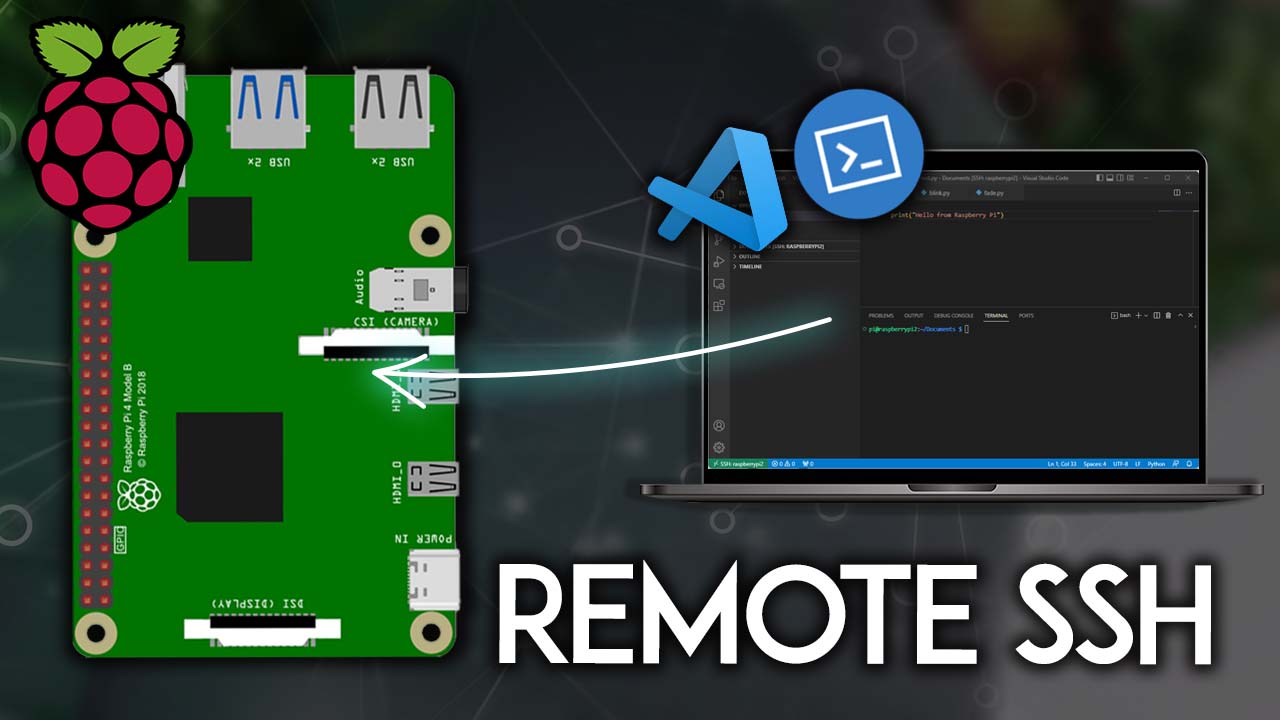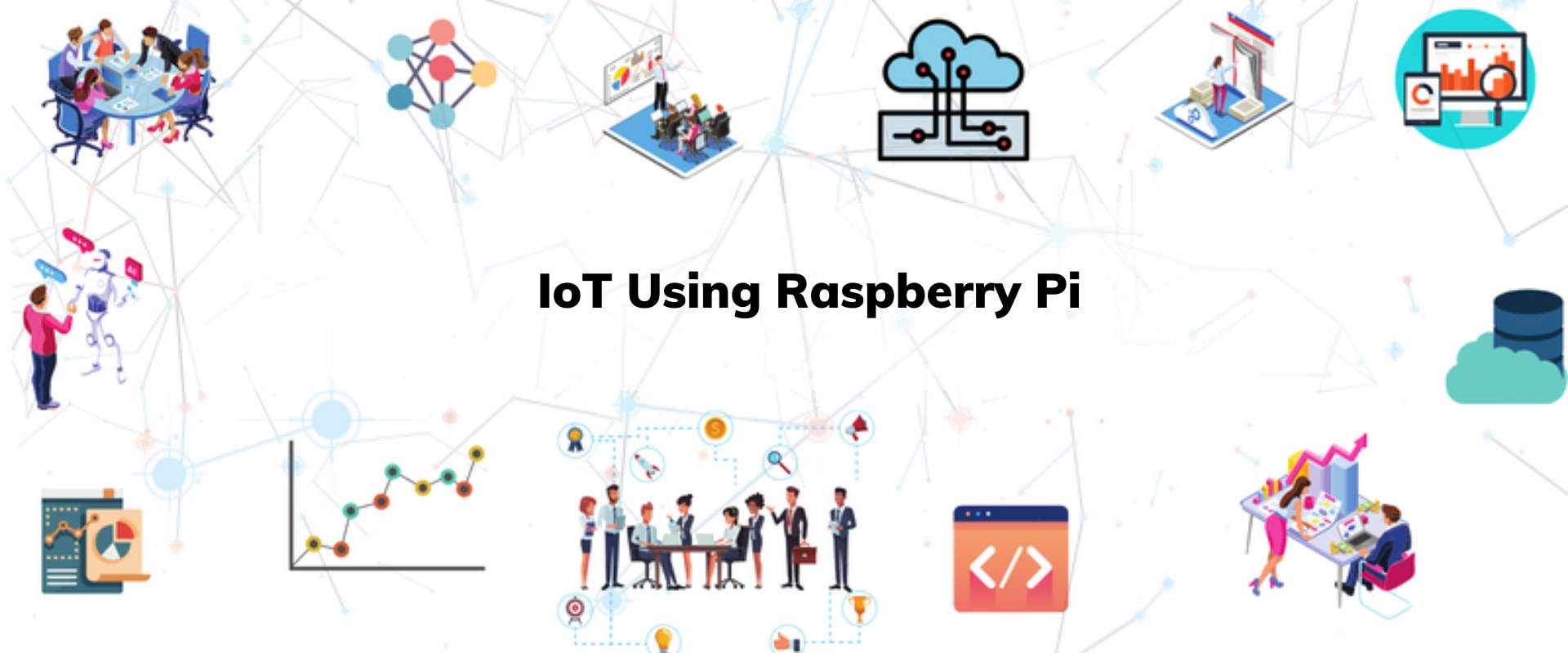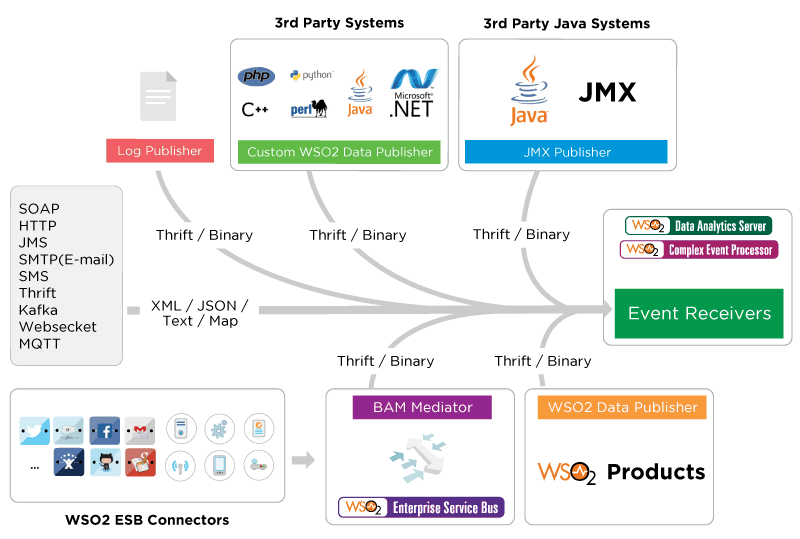Unlock Your Pi: Best Remote IoT Platform + SSH Guide
Are you struggling to manage your Raspberry Pi devices remotely, especially with the increasing demand for secure IoT solutions? The selection of a suitable remote IoT platform equipped with SSH capabilities for your Raspberry Pi is no longer a luxury, but an absolute necessity for ensuring streamlined operations and robust security.
The proliferation of freely downloadable remote IoT platforms boasting SSH functionalities for Raspberry Pi has indeed struck a chord within the tech community. This wave of accessibility has been the catalyst for a surge in innovation and experimentation, giving rise to a diverse array of applications spanning from intelligent home systems to sophisticated environmental monitoring networks. As the Internet of Things (IoT) continues its relentless expansion, the demand for dependable remote IoT platforms has reached unprecedented levels, underscoring their importance in the modern technological landscape.
| Category | Details |
|---|---|
| Platform Type | Remote IoT Management Platform |
| Target Device | Raspberry Pi |
| Key Feature | SSH (Secure Shell) support |
| Primary Benefit | Secure remote access and management of Raspberry Pi devices |
| Application Areas | Smart Homes, Environmental Monitoring, Industrial Automation, Remote Device Management |
| Security Protocol | SSH Key Authentication |
| Community Impact | Facilitates innovation and experimentation within the IoT community |
| Commercial Relevance | Essential for deploying and managing large-scale IoT solutions |
| Future Trend | Increasing demand for robust and reliable remote IoT platforms |
| Reference Link | Raspberry Pi Official Website |
The availability of these platforms has significantly lowered the barrier to entry for developers and hobbyists alike, fostering a vibrant ecosystem of IoT innovation. However, it also necessitates a careful evaluation of the various options available to ensure the chosen platform aligns with specific project requirements and security needs. Selecting the right remote IoT platform for Raspberry Pi is a pivotal decision that can significantly impact the success and scalability of any smart innovation.
These platforms serve as the bedrock for developing and deploying smart solutions that fully capitalize on the capabilities of the Raspberry Pi. They provide the essential tools and infrastructure needed to seamlessly manage devices, collect data, and implement control mechanisms, all from a remote location. This remote management capability is particularly crucial for applications where physical access to the Raspberry Pi is limited or impractical.
SSH, or Secure Shell, is a cornerstone of secure remote management. It functions like a secure blanket, wrapping all data in encryption, thus preventing unauthorized access. This encryption is vital for protecting sensitive data transmitted between the Raspberry Pi and the remote platform, ensuring confidentiality and integrity. When you are securely connected to your Raspberry Pi via SSH keys, you gain peace of mind knowing that your data is shielded from potential eavesdroppers.
Choosing the best remote IoT platform for managing SSH keys on a Raspberry Pi requires careful consideration. There are numerous options, each with its own unique set of advantages and disadvantages. Some platforms excel in ease of use, while others prioritize scalability or security features. A thorough understanding of your project's specific needs is essential for making an informed decision.
Each platform offers a distinct combination of strengths and weaknesses. Some platforms may offer a more intuitive user interface, making them ideal for beginners. Others may provide advanced features such as automated device provisioning or over-the-air updates, catering to the needs of more experienced users. Evaluating these strengths and weaknesses against your project requirements is crucial.
However, to fully unlock the Raspberry Pi's potential, it's essential to pair it with a robust SSH IoT platform. SSH ensures secure communication between devices, making it a critical component for managing IoT projects remotely. Without SSH, your IoT projects are vulnerable to security breaches and unauthorized access.
With the growing popularity of Raspberry Pi in IoT projects, finding a reliable and efficient platform to remotely manage these devices has become crucial. The Raspberry Pi's versatility and affordability have made it a popular choice for a wide range of IoT applications, from home automation to industrial control. However, its limited resources and open-source nature necessitate the use of a robust remote management platform to ensure security and stability.
By leveraging the right remote IoT platform, users can unlock the full potential of their Raspberry Pi devices. This includes the ability to remotely monitor device health, deploy software updates, and troubleshoot issues, all from a centralized dashboard. This centralized management capability significantly reduces the time and effort required to maintain and scale IoT deployments.
Criteria for selecting the best remote IoT platform are multifaceted. When evaluating remote IoT platforms for Raspberry Pi, several factors must be considered. These factors include security, scalability, ease of use, cost, and compatibility with existing infrastructure. A comprehensive evaluation of these factors is essential for selecting a platform that meets your specific needs and budget.
Security is paramount. The platform should offer robust security features, including SSH key authentication, data encryption, and intrusion detection. Scalability is also crucial, especially for projects that are expected to grow over time. The platform should be able to handle a large number of devices and data streams without performance degradation. Ease of use is important for reducing the learning curve and streamlining operations. The platform should have an intuitive user interface and comprehensive documentation. Cost is a significant consideration, especially for budget-conscious projects. The platform should offer a pricing model that aligns with your usage patterns and budget constraints. Compatibility with existing infrastructure is essential for seamless integration with your existing systems and workflows.
Ultimately, choosing the best remote IoT platform that supports SSH key authentication for your Raspberry Pi is the cornerstone of building secure and efficient IoT solutions. It requires a thorough understanding of your project's requirements, a careful evaluation of available platforms, and a commitment to staying informed about the latest security best practices. This approach will ensure that your IoT deployments are not only functional but also secure and sustainable over the long term.
The need for reliable remote access extends beyond simple convenience. In many industrial and commercial applications, remote access is essential for maintaining uptime and minimizing downtime. The ability to remotely diagnose and resolve issues can significantly reduce the cost of on-site repairs and maintenance.
Moreover, the rise of edge computing has further amplified the importance of remote IoT platforms. Edge computing involves processing data closer to the source, reducing latency and improving responsiveness. Remote IoT platforms play a crucial role in managing and orchestrating these edge devices, ensuring that they are properly configured and functioning optimally.
Another critical aspect to consider is the level of support offered by the platform provider. A responsive and knowledgeable support team can be invaluable when troubleshooting issues or implementing new features. Before committing to a platform, it's essential to evaluate the quality and availability of their support services.
The open-source nature of Raspberry Pi also necessitates a focus on security best practices. While the Raspberry Pi's open architecture fosters innovation and customization, it also introduces potential security vulnerabilities. A robust remote IoT platform can help mitigate these vulnerabilities by providing secure remote access, intrusion detection, and other security features.
Furthermore, the growing complexity of IoT deployments demands platforms that offer advanced analytics and reporting capabilities. The ability to analyze data collected from IoT devices can provide valuable insights into system performance, resource utilization, and potential areas for improvement. A remote IoT platform with built-in analytics can significantly enhance the value of your IoT deployments.
As the IoT landscape continues to evolve, the need for flexible and adaptable remote IoT platforms will only increase. Platforms that can seamlessly integrate with new technologies and adapt to changing business requirements will be best positioned to thrive in the long term.
In addition to security, scalability, and ease of use, another important factor to consider is the platform's ability to handle a variety of communication protocols. IoT devices often use different communication protocols, such as MQTT, CoAP, and HTTP. A versatile remote IoT platform should be able to support a wide range of these protocols, allowing you to connect and manage diverse IoT devices.
The ability to manage device configurations remotely is also a crucial feature. This allows you to easily update device settings, install new software, and troubleshoot issues without having to physically access each device. Remote configuration management can significantly reduce the time and effort required to maintain large-scale IoT deployments.
Moreover, the platform should provide robust access control mechanisms to ensure that only authorized users can access sensitive data and control IoT devices. Role-based access control (RBAC) is a common feature that allows you to define different roles with varying levels of access privileges.
The platform should also provide comprehensive logging and auditing capabilities. This allows you to track user activity, identify potential security breaches, and comply with regulatory requirements. Detailed logs can be invaluable for troubleshooting issues and understanding system behavior.
Another important consideration is the platform's ability to integrate with other enterprise systems, such as CRM, ERP, and business intelligence tools. Seamless integration with these systems can unlock new opportunities for data analysis, process automation, and improved decision-making.
The platform should also provide a user-friendly dashboard that allows you to monitor device status, view data trends, and manage alerts. A well-designed dashboard can significantly improve the efficiency of IoT operations and provide valuable insights into system performance.
In addition to the features mentioned above, the platform should also provide a comprehensive API that allows you to integrate it with other applications and services. A well-documented API is essential for building custom solutions and extending the platform's functionality.
Furthermore, the platform should be actively maintained and supported by a reputable vendor. Regular updates and security patches are essential for protecting against emerging threats. A strong vendor with a proven track record can provide peace of mind and ensure the long-term viability of your IoT deployments.
Choosing the right remote IoT platform for your Raspberry Pi is a complex decision that requires careful consideration of your specific needs and requirements. By evaluating the factors discussed above, you can make an informed decision and select a platform that will help you build secure, scalable, and efficient IoT solutions.
The development of custom applications is often necessary to tailor the platform to specific project requirements. A platform that supports custom application development allows you to extend its functionality and create unique solutions that meet your exact needs.
The importance of regular security audits cannot be overstated. Independent security audits can help identify potential vulnerabilities and ensure that the platform meets industry best practices. Choose a platform that undergoes regular security audits and publishes the results for transparency.
Data visualization tools are also essential for understanding the data collected from IoT devices. The platform should provide a variety of visualization options, such as charts, graphs, and maps, to help you gain insights into system performance and identify potential trends.
The platform should also support over-the-air (OTA) updates, which allow you to remotely update the firmware and software on IoT devices. OTA updates are essential for maintaining security and ensuring that devices are running the latest versions of software.
The platform should also provide robust error handling and logging mechanisms. This allows you to quickly identify and resolve issues that may arise in your IoT deployments. Detailed error logs can be invaluable for troubleshooting problems and understanding system behavior.
The platform should also support multi-factor authentication (MFA) to further enhance security. MFA requires users to provide multiple forms of authentication, such as a password and a one-time code, to access the platform.
The platform should also provide a sandbox environment where you can test new features and configurations before deploying them to production. A sandbox environment allows you to experiment without risking the stability of your production systems.
The platform should also support integration with popular cloud services, such as AWS, Azure, and Google Cloud. Integration with these services allows you to leverage their vast resources and capabilities to enhance your IoT deployments.
The platform should also provide robust data backup and recovery mechanisms. This ensures that your data is protected in the event of a system failure or disaster.
The platform should also support integration with social media platforms, such as Twitter and Facebook. Integration with these platforms allows you to share data and insights from your IoT deployments with a wider audience.
Ultimately, the best remote IoT platform for your Raspberry Pi is the one that best meets your specific needs and requirements. By carefully evaluating the factors discussed above, you can make an informed decision and select a platform that will help you build secure, scalable, and efficient IoT solutions.
The ability to monitor power consumption is also a valuable feature, especially for battery-powered IoT devices. A platform that provides power consumption monitoring can help you optimize device settings and extend battery life.
The platform should also support geofencing, which allows you to define virtual boundaries and trigger alerts when devices enter or exit those boundaries. Geofencing can be useful for tracking assets, managing fleets, and ensuring security.
The platform should also provide robust reporting capabilities, allowing you to generate custom reports on device status, data trends, and system performance. Comprehensive reporting can help you gain insights into your IoT deployments and make informed decisions.
The platform should also support integration with machine learning (ML) algorithms, allowing you to analyze data and predict future trends. ML integration can unlock new opportunities for predictive maintenance, anomaly detection, and process optimization.
The platform should also provide robust support for security updates and patches. Regular security updates are essential for protecting against emerging threats and ensuring the long-term security of your IoT deployments.
Choosing the right remote IoT platform is a critical decision that can significantly impact the success of your IoT projects. Take the time to carefully evaluate your options and select a platform that meets your specific needs and requirements.



Detail Author:
- Name : Jacquelyn Dare
- Username : brady10
- Email : reinhold.bradtke@schamberger.com
- Birthdate : 2000-04-13
- Address : 97673 Abigayle Court West Danshire, NM 38520
- Phone : +1-989-797-4523
- Company : Klocko LLC
- Job : Hand Trimmer
- Bio : Inventore adipisci magni minus sunt voluptatem. Sed voluptatem consectetur ipsa nostrum fugit ullam eveniet dolor. Architecto nulla quod autem alias.
Socials
tiktok:
- url : https://tiktok.com/@chadrick_real
- username : chadrick_real
- bio : Dolorem est error est cupiditate.
- followers : 6986
- following : 2712
facebook:
- url : https://facebook.com/oberbrunnerc
- username : oberbrunnerc
- bio : Expedita ipsa et nobis temporibus perspiciatis tenetur quam.
- followers : 650
- following : 787